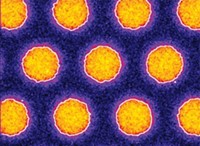Advertisement
Grab your lab coat. Let's get started
Welcome!
Welcome!
Create an account below to get 6 C&EN articles per month, receive newsletters and more - all free.
It seems this is your first time logging in online. Please enter the following information to continue.
As an ACS member you automatically get access to this site. All we need is few more details to create your reading experience.
Not you? Sign in with a different account.
Not you? Sign in with a different account.
ERROR 1
ERROR 1
ERROR 2
ERROR 2
ERROR 2
ERROR 2
ERROR 2
Password and Confirm password must match.
If you have an ACS member number, please enter it here so we can link this account to your membership. (optional)
ERROR 2
ACS values your privacy. By submitting your information, you are gaining access to C&EN and subscribing to our weekly newsletter. We use the information you provide to make your reading experience better, and we will never sell your data to third party members.
Synthesis
Selective CO Oxidation
Catalysis: Low-coordination iron sites at interface between oxide and metal drives the conversion
by Mitch Jacoby
May 27, 2010
| A version of this story appeared in
Volume 88, Issue 22

Low-coordination iron atoms located along the edges of specially prepared iron oxide crystals supported on platinum function as catalytically active sites for CO oxidation, according to a study conducted in China (Science 2010, 328, 1141). The investigation identifies a general principle for designing new types of metal oxide catalysts that might be sufficiently selective and durable for use in fuel cells and other industrial applications.
Catalysts based on iron species in low-coordination (or "coordinatively unsaturated") bonding configurations are known to play key roles in solution-phase and enzyme-mediated oxidation reactions. In those systems, the reactive centers tend to be pinned in place by proteins or various ligands. Similar types of iron assemblies could form the heart of highly active solid-phase catalysts but have been difficult to prepare.
Now, scientists at the Dalian Institute of Chemical Physics have shown that low-coordination iron species can be synthesized reproducibly along the periphery of nanosized islands of oxygen-deficient FeO supported on platinum. Furthermore, by using a combination of experimental and computational analysis methods, the team, which includes Qiang Fu, Wei-Xue Li, and Xinhe Bao, has shown that these reactive centers are stabilized at the interface between the oxide and the metal because of strong oxide-metal interactions. These findings could be used to design other catalysts, the group suggests.
To evaluate the ferrous oxide's utility in catalysis, the researchers prepared a series of samples, including industrial-style silica-supported FeO-Pt nanoparticles, and tested them for their ability to oxidize CO in the presence of hydrogen. This preferential oxidation (or PROX reaction) is a critical step in ridding hydrogen of low levels of CO, a common contaminant that readily poisons fuel cell catalysts. On the basis of control tests, including a 1,000-hour fuel cell test run, the team reports that its new catalysts are highly active, durable, and selective for CO oxidation.
"These results—nearly 100% conversion with 100% CO selectivity—are truly impressive," says Charles H. F. Peden, a laboratory fellow at Pacific Northwest National Laboratory. "Equally impressive are the detailed surface science and computational studies that convincingly rationalize these new PROX catalysis results."




Join the conversation
Contact the reporter
Submit a Letter to the Editor for publication
Engage with us on Twitter